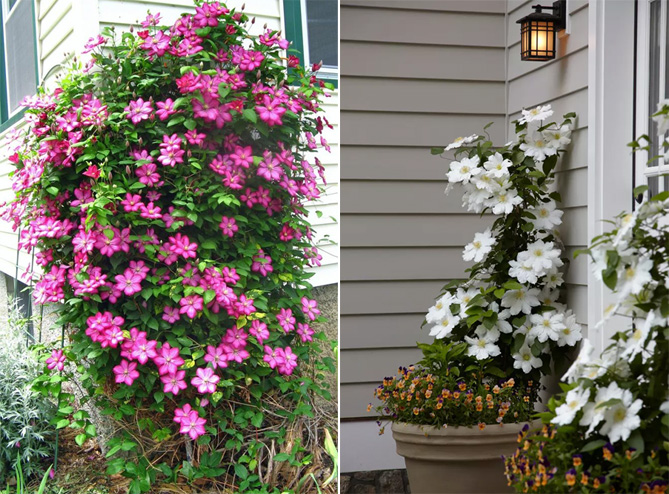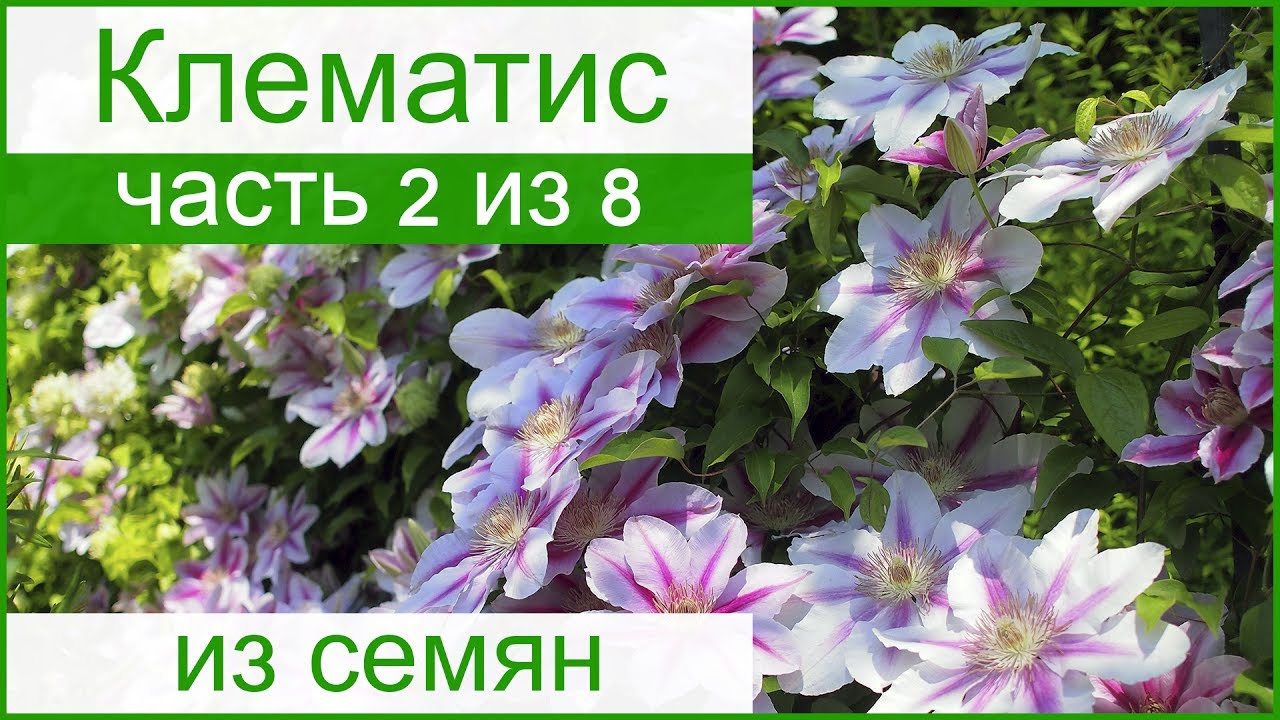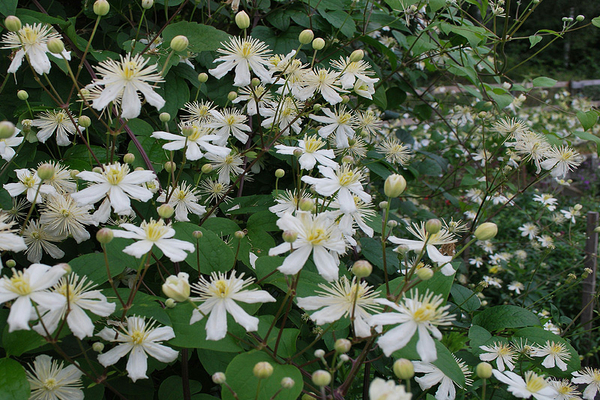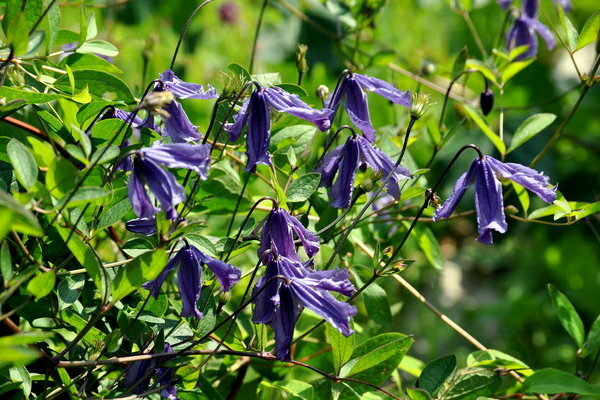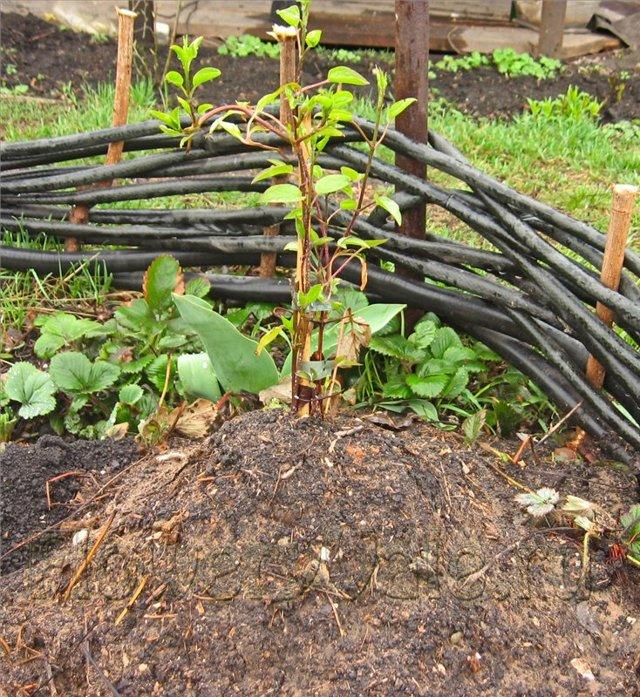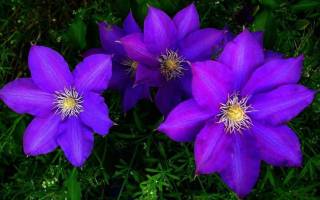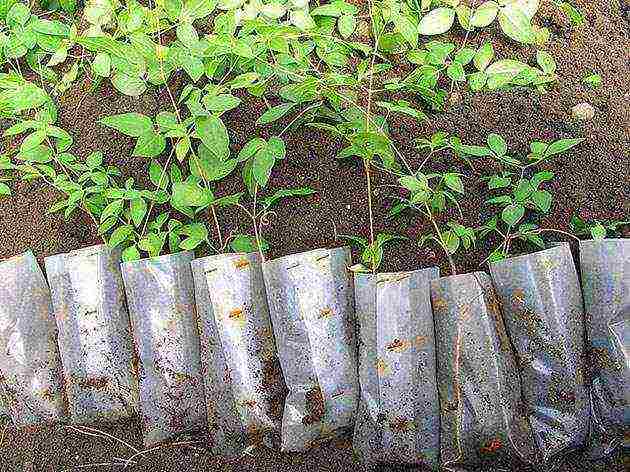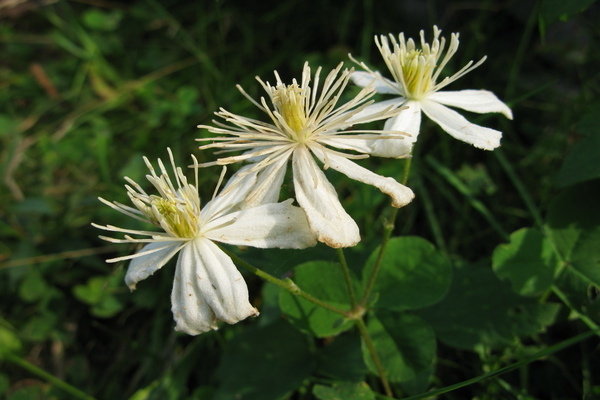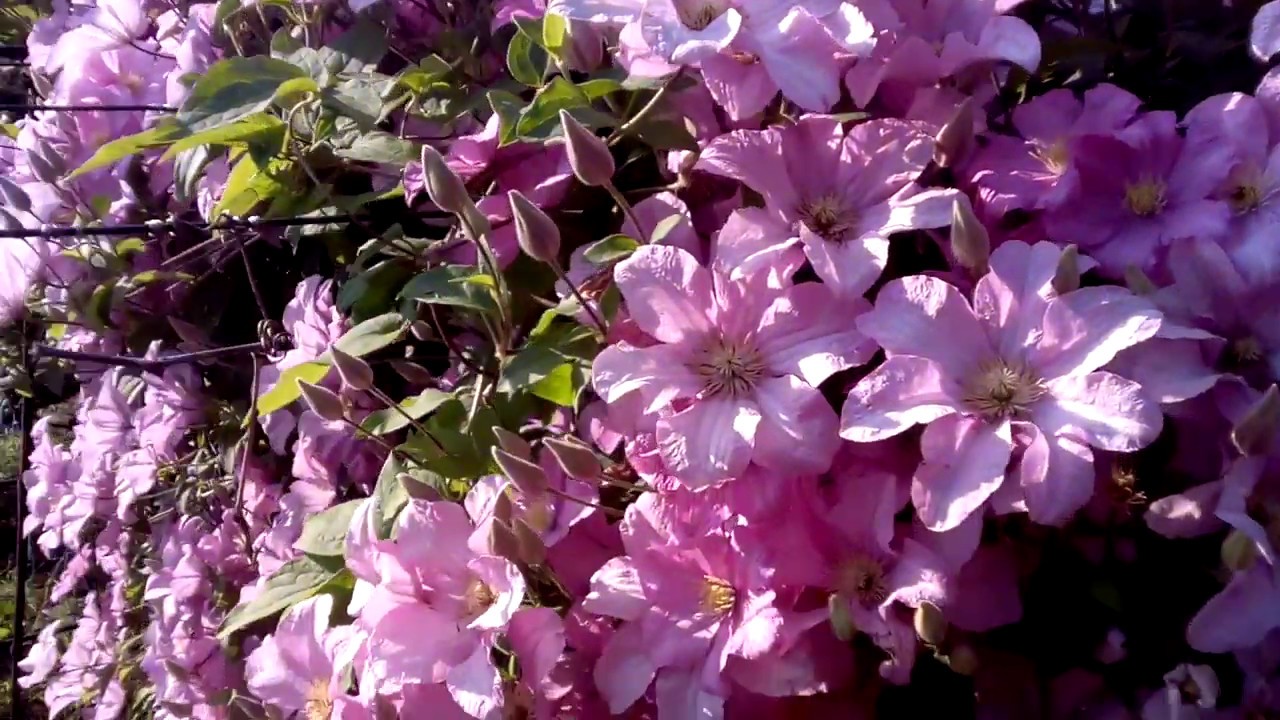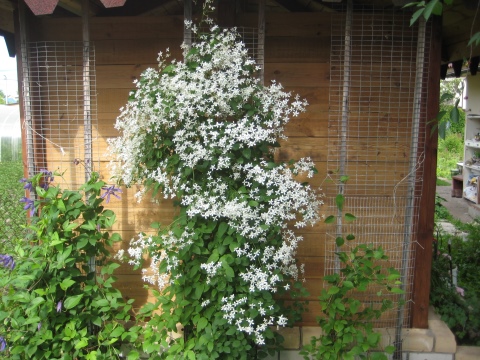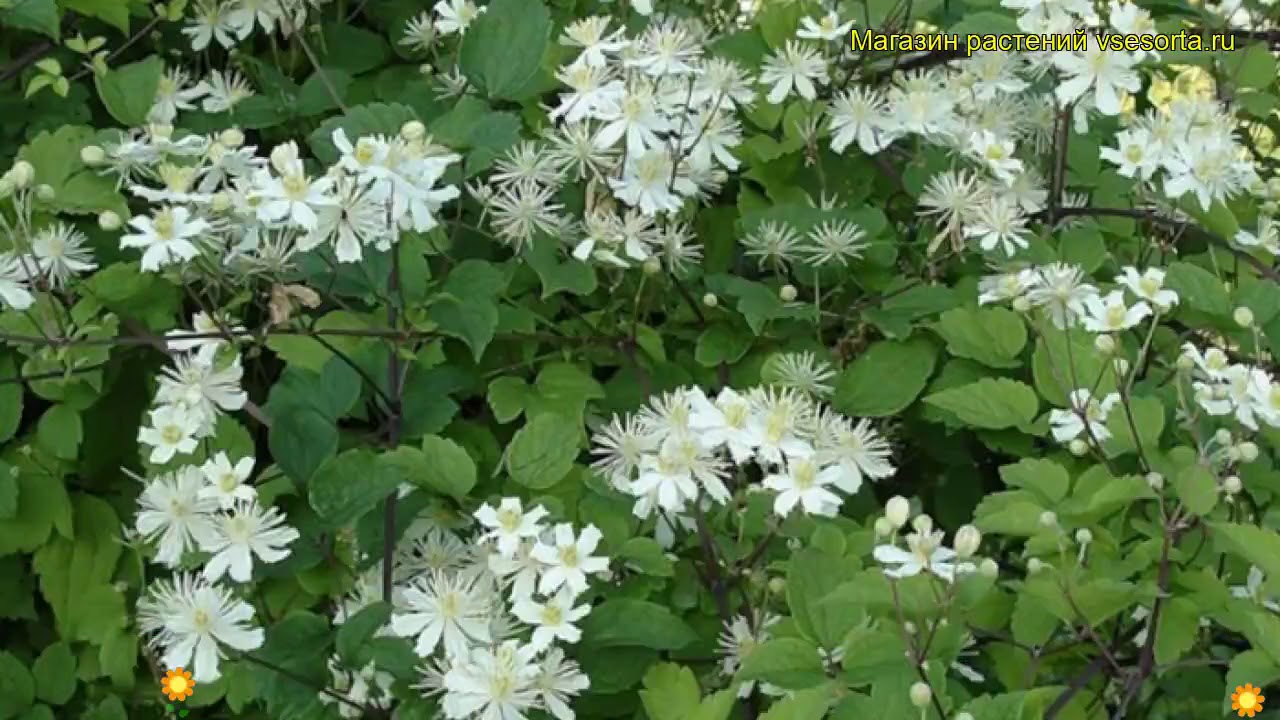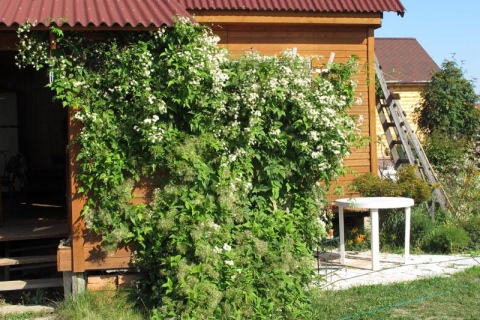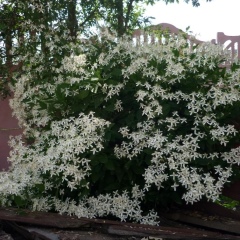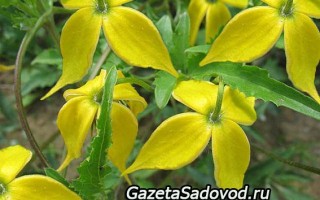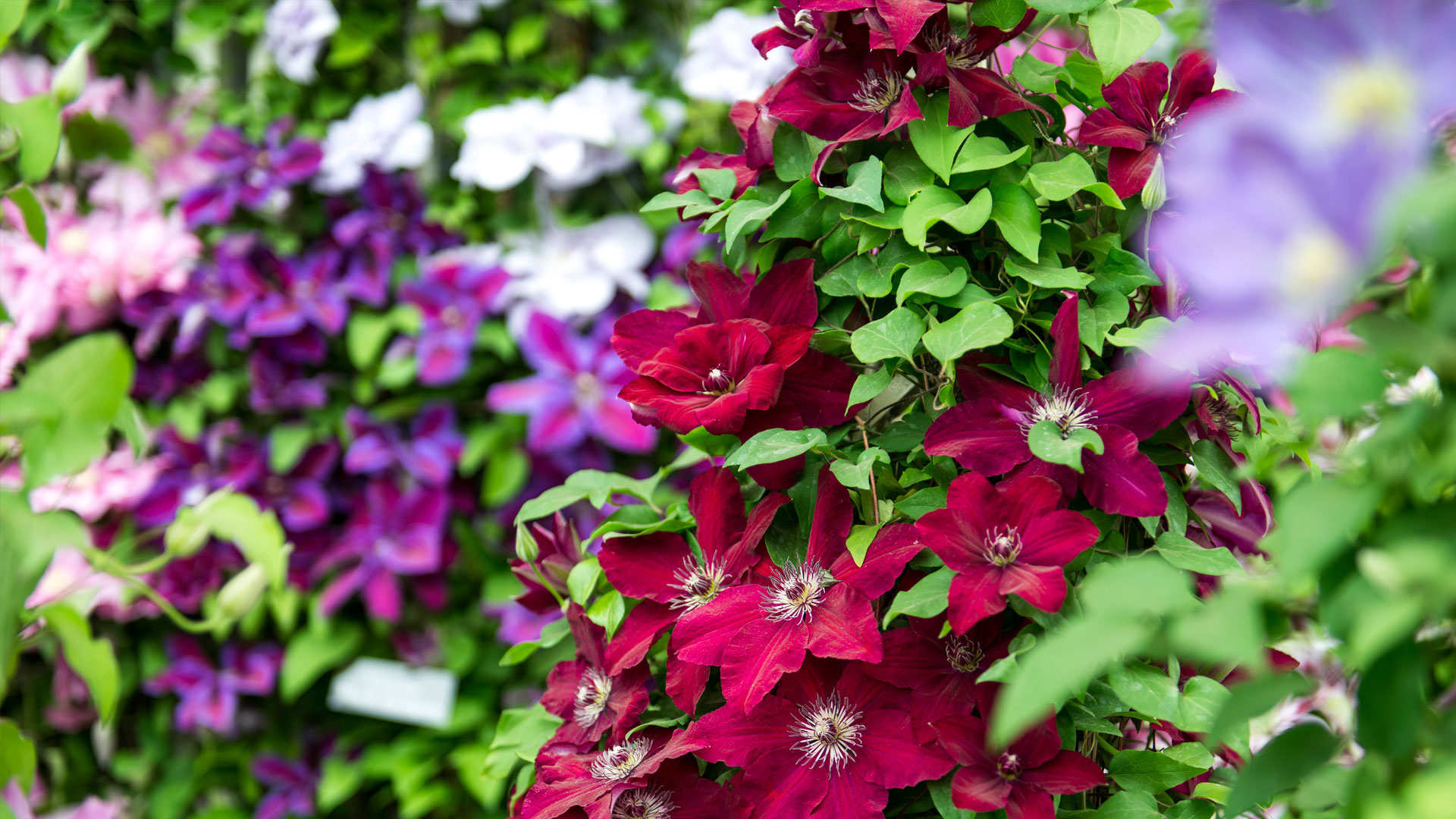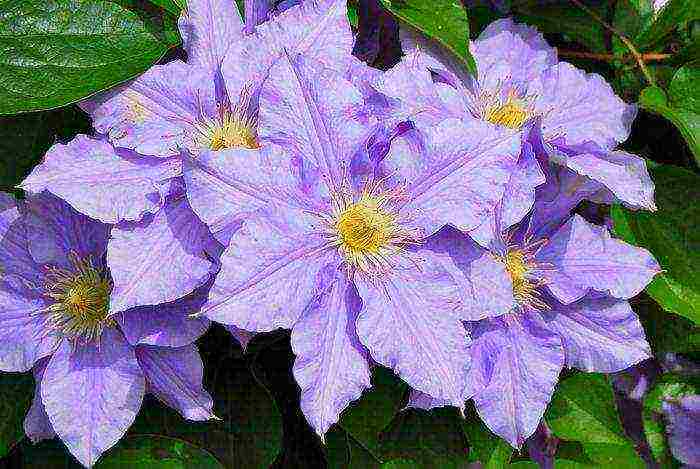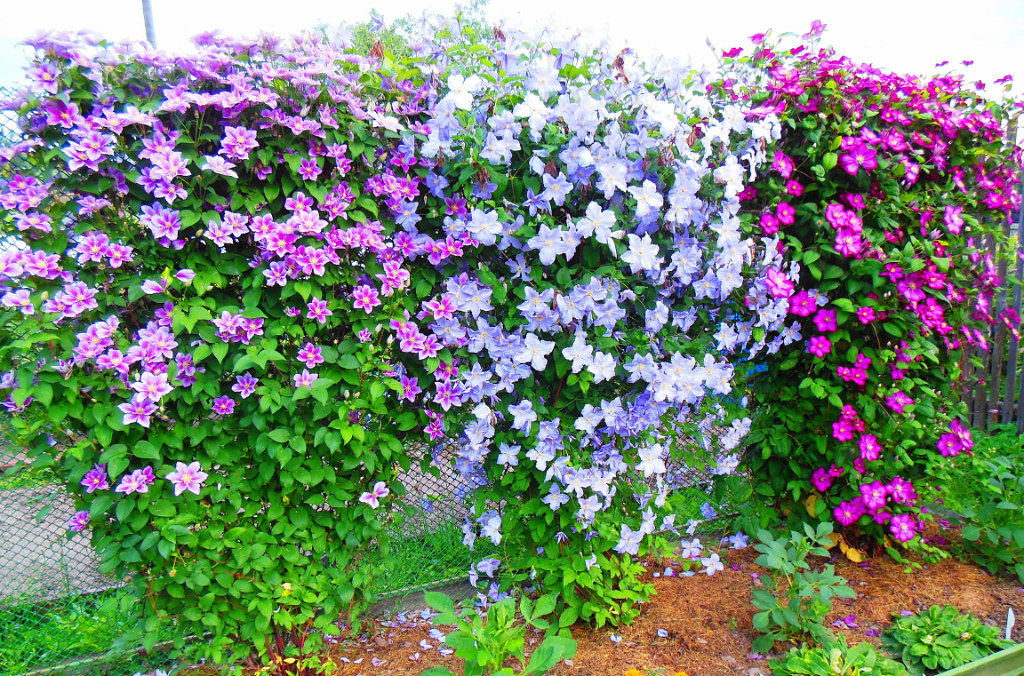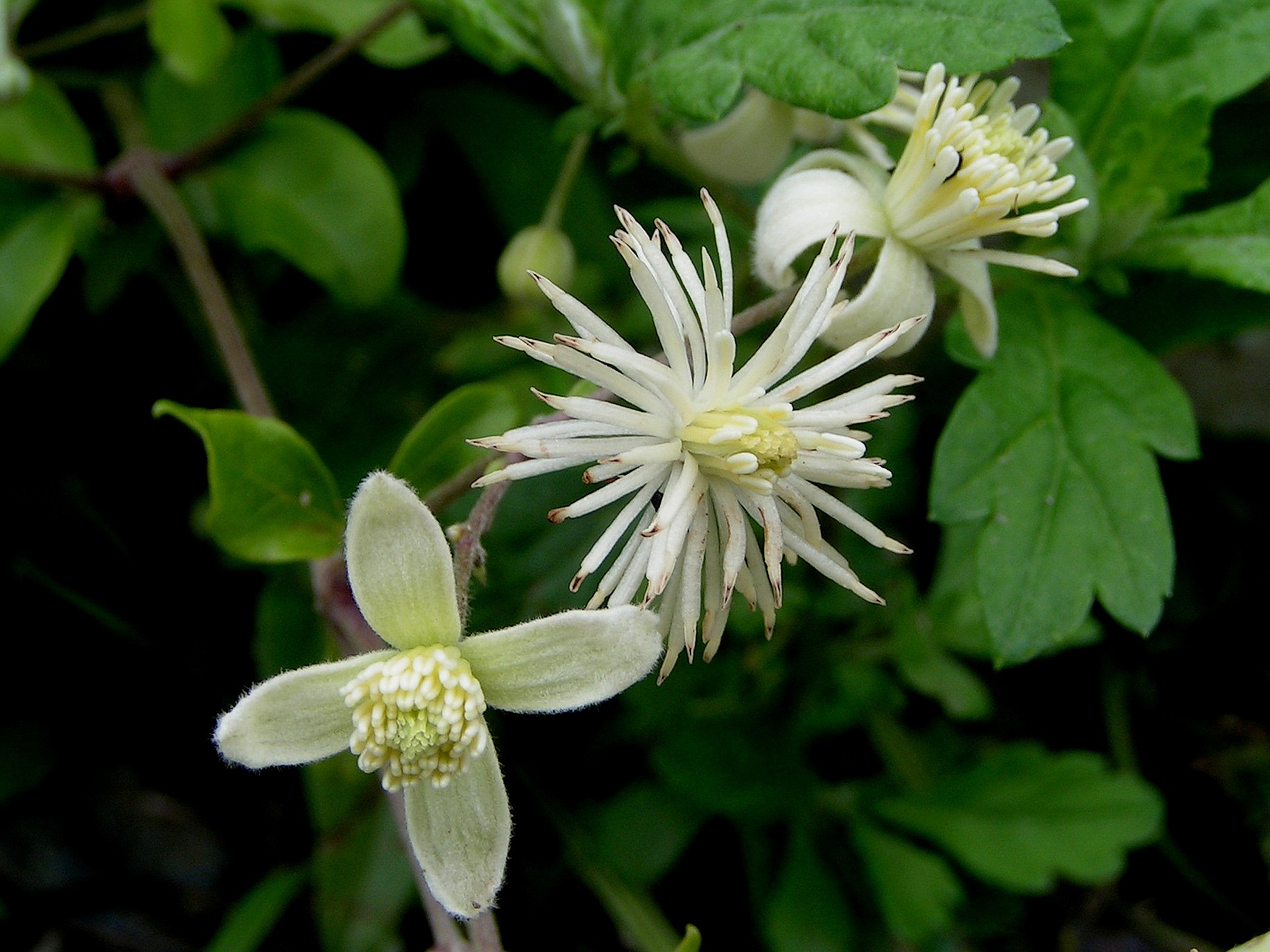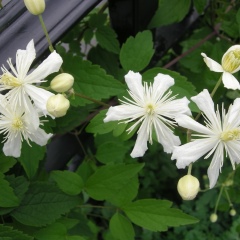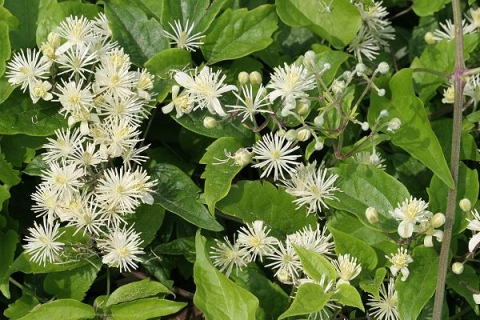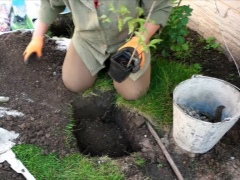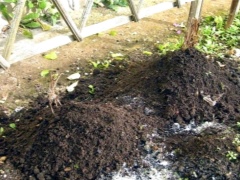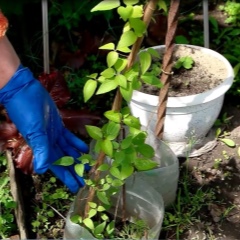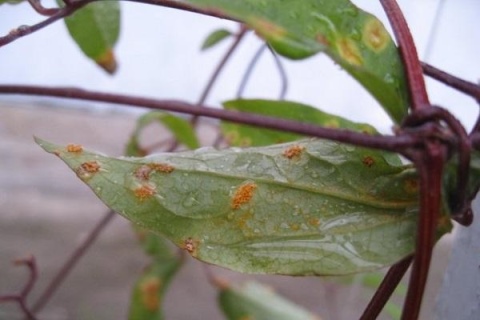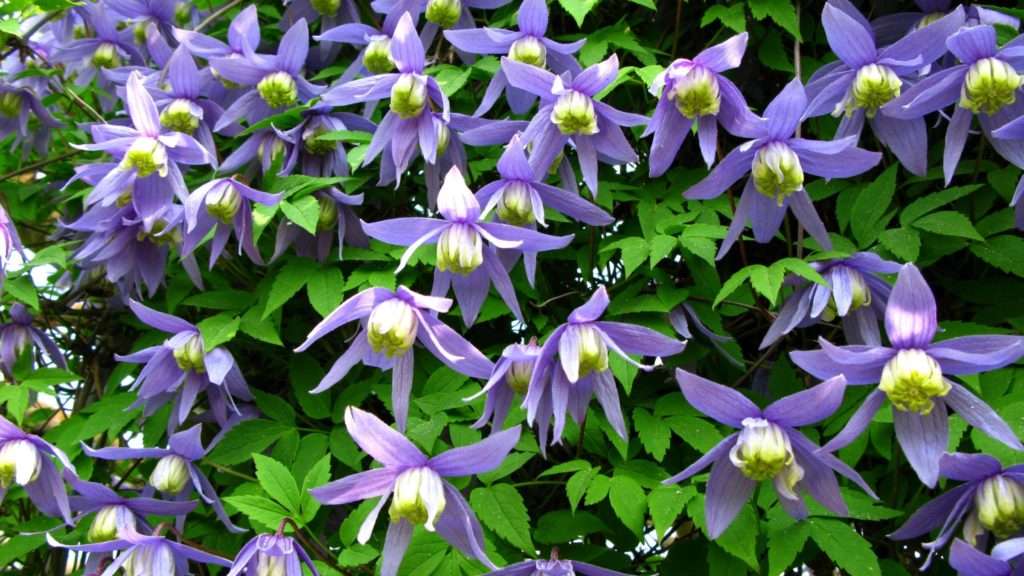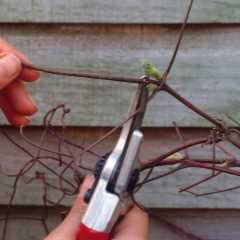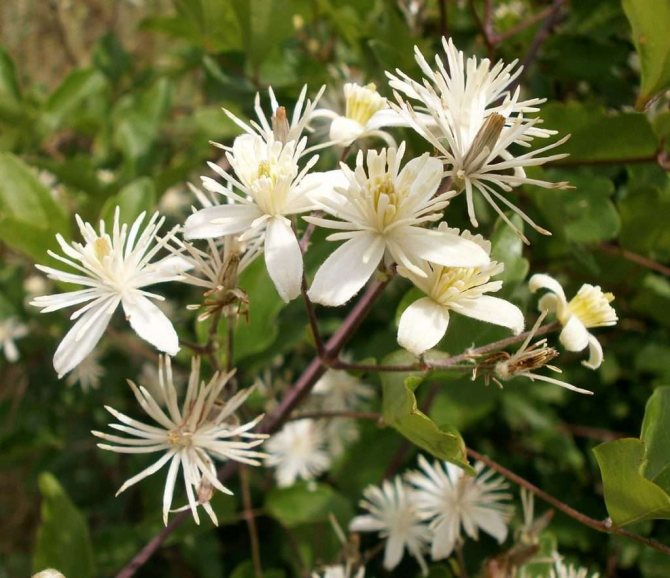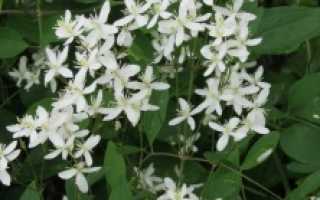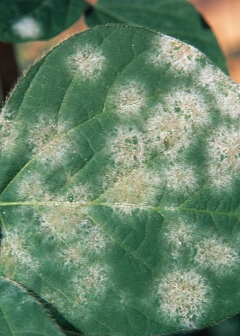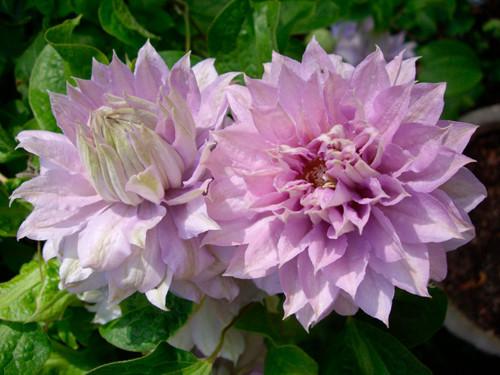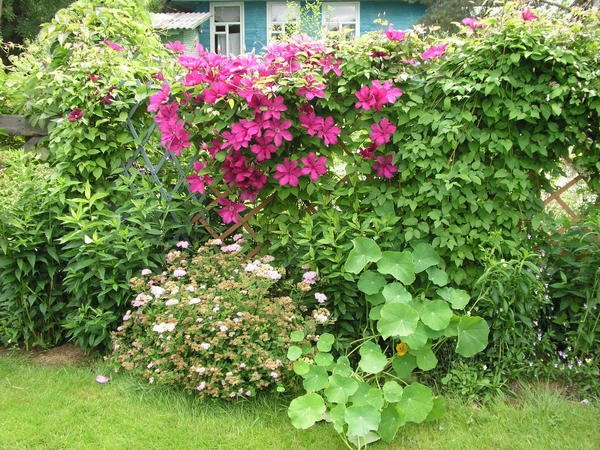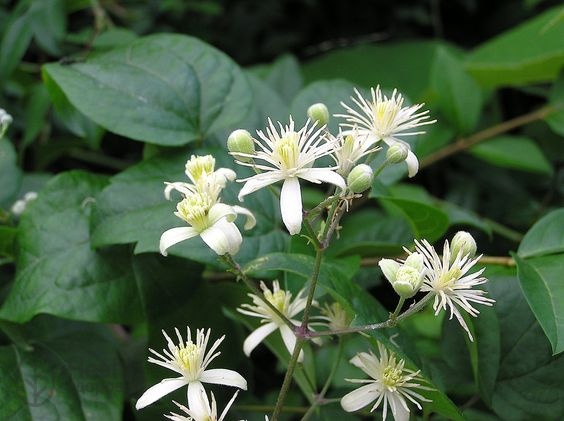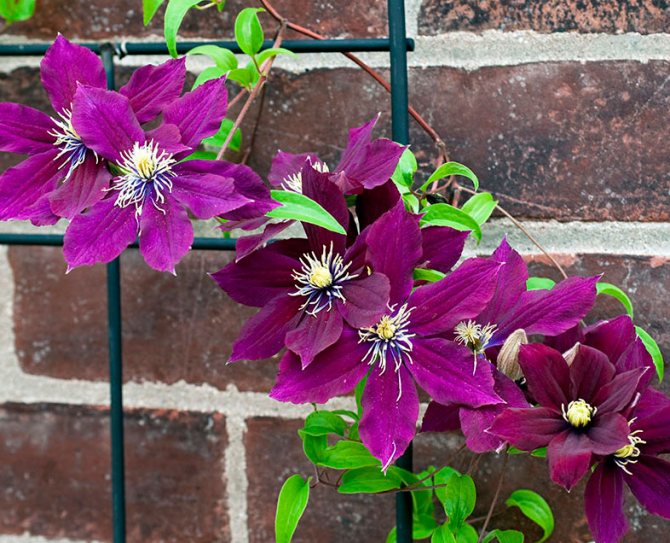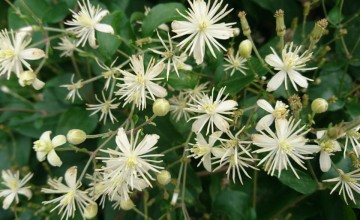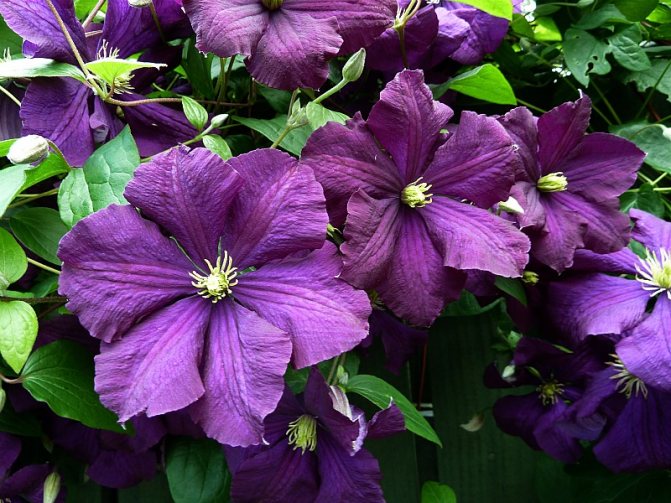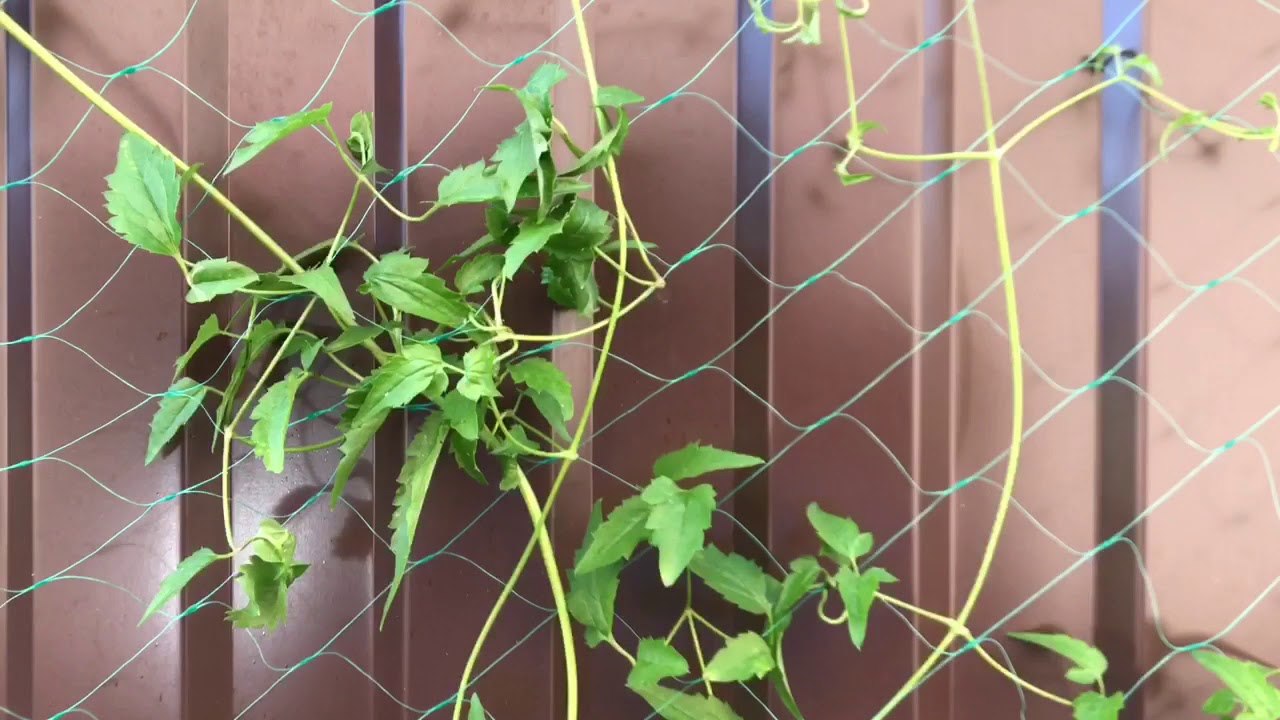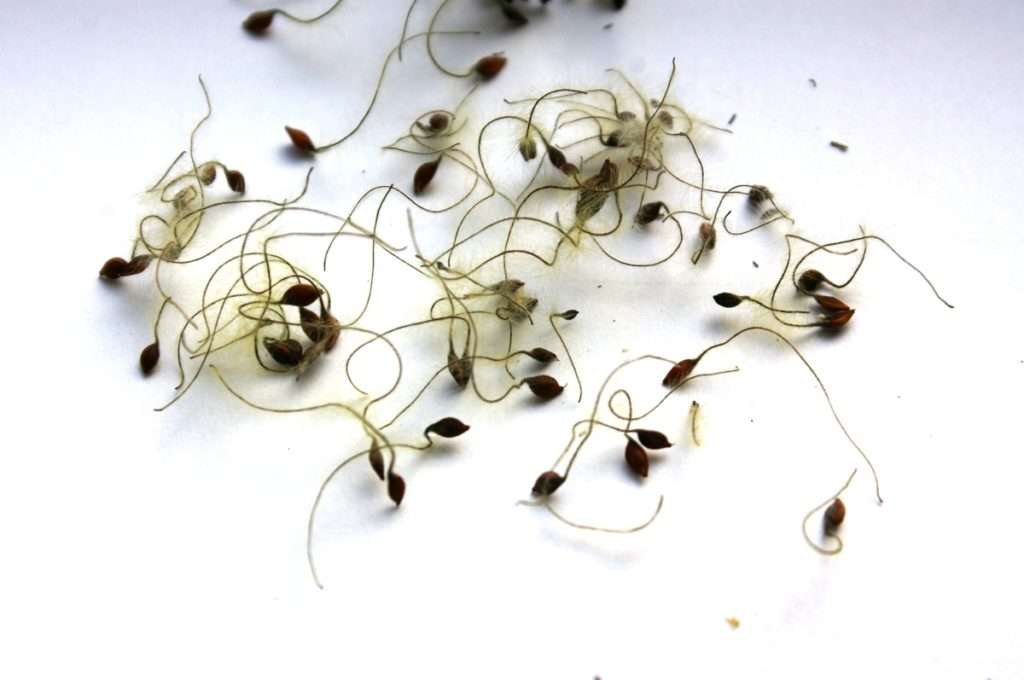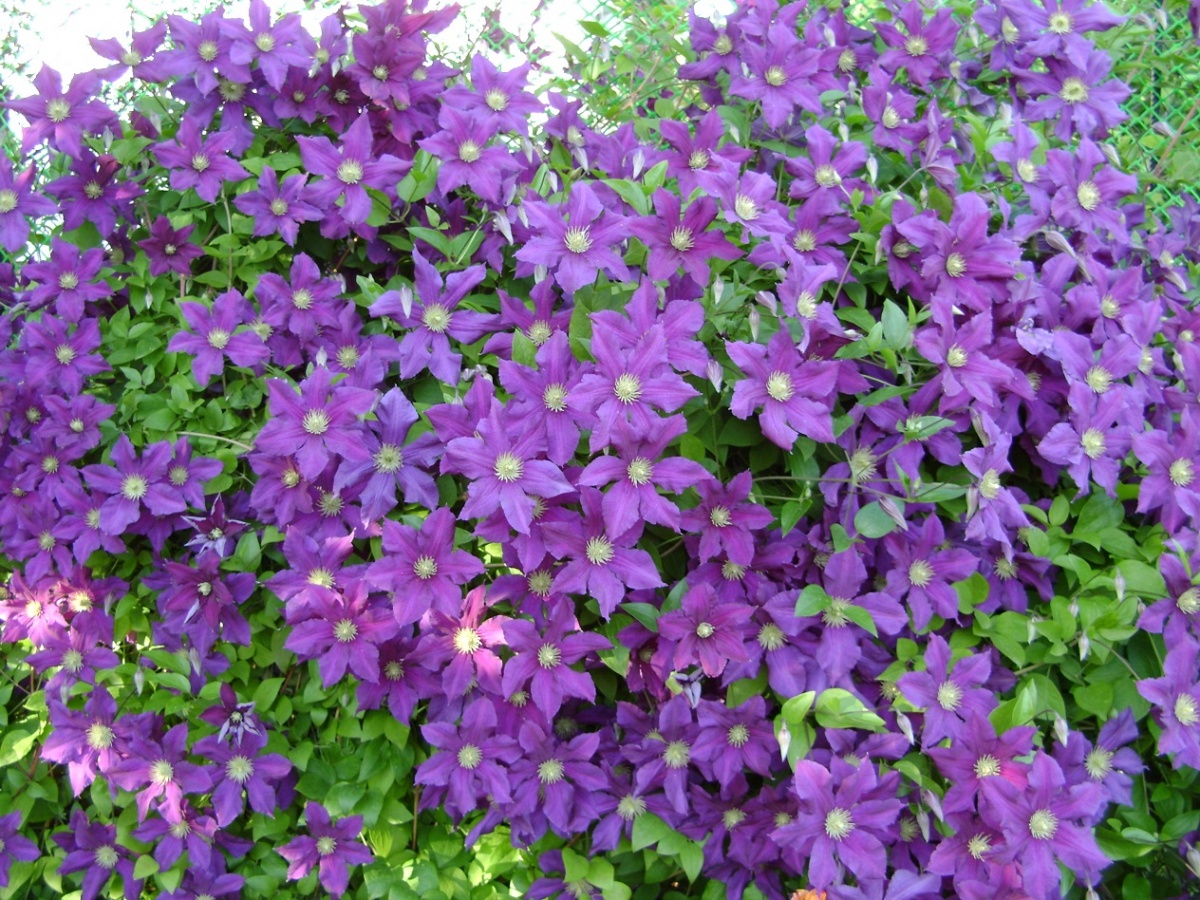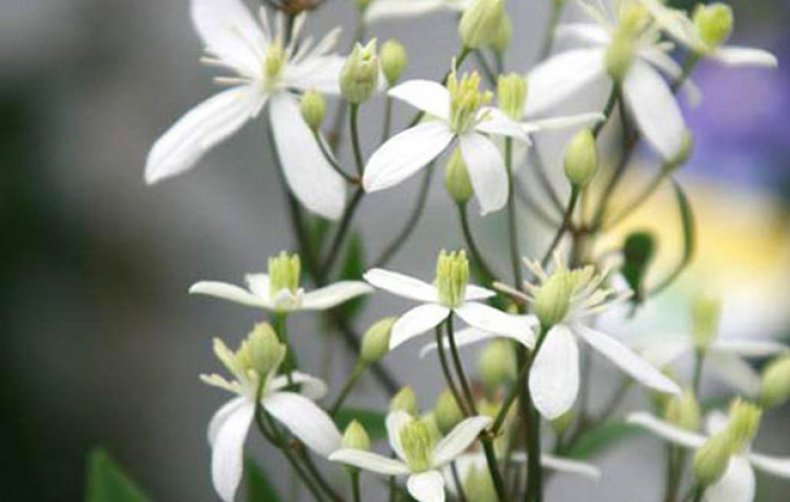Chemical composition of grape-leaved clematis:
Medicinal raw materials are found mainly in the leaves - saponin and anemonin.
Clematis also contains anemol and olematinol, which cause irritation and redness of the skin, and the glycoside stigmasterol, sitosterol, leontin, wax substances and saponins.
Fresh leaves, young stems and flowers contain protoanemonin, poisonous clematinol and saponin.
Like other clematis, its leaves and stems contain the poisonous alkaloid clematine, which is almost completely destroyed when the plant is dried, boiled or soaked in vinegar.
All of these active ingredients form the basis of the chemical composition of grape-leaved clematis (clematis).
Clematis Grape-leaved: variety description
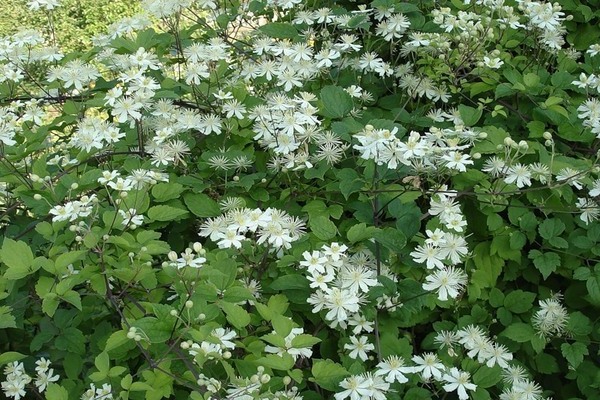
Clematis grape-leaved: photo
Clematis Vitalba (clematis vitalba) is well suited for landscaping your summer cottage. But many gardeners are faced with questions related to planting, care and reproduction of this plant. we will talk about this below. Grape-leaved belongs to the genus clematis and the buttercup family. In appearance, the plant resembles a liana. The cuttings have an elongated length, thanks to which the branches can catch on the support and grow and develop even more.
It is due to the fact that the plant can curl, clasping a support, and it received the name Clematis vitalba. This type of clematis is well suited for decorating gazebos, terraces, balconies, and various fences. If you have any inaccuracies, flaws in buildings, then this plant will perfectly help to hide it. Also clematis grape-leaved vitalba is able to create shade, which is necessary on hot and dry summer days.
In wildlife, there are 2 types of clematis: herbaceous and semi-handicraft. Herbaceous shoots are characterized by dying off after the end of the vegetative period, only the root system can remain. As for the semi-handicraft type, for him, the nature of the poor endurance of winter cold.
The root system of this culture can also be of 2 types: • Thin core • Branched fibrous.
The roots are in the top layer of the soil. Clematis grape-leaved white small-flowered has 1 type of root system, therefore it does not relate very well to frequent transplants. Therefore, it is necessary to plant the plant immediately in its permanent place. the stems look like thin flexible twigs with cracked bark, which has a dark brown color. Each year, you can see the appearance of new shoots on them. Even after 1 year, you can notice a strong growth of the plant.
Unpaired leaves are complex and have 3-5 blades. The leaves are ovoid, dark green in color, rounded base, sharp end that resembles the shape of a heart. At the edges, you can sometimes notice the presence of large teeth. The leaves can be either smooth or slightly pubescent, have a length of 3-10 cm and a width of 3-4.5 cm. The first flowering is observed 3 years after the first planting of the plant. bud formation is possible only on young shoots.
White flowers have a delicate aroma that is somewhat reminiscent of almonds. The diameter of the flowers can be about 2 cm. Asexual flowers are collected in paniculate inflorescences located on a long stem, the length of which can be up to 12 cm. The flowers are in the form of stars. The core is covered with a large number of yellow stamens, which is surrounded by 5-6 petals.
The flowering period is from June to September.After the flowering is over, you can see how the fruits appear, which are collected in a maned head. Its edges are thickened, the spout is pubescent and feathery, it can be about 4 cm in size. The seeds are brown in color, elongated, 7 mm long, 4 mm wide. The fruits can remain on the branch for a long period of time.
Features of cultivation and reproduction
This plant does not usually cause problems for gardeners. After the flowering period is over, clematis decorates the landscape with a spectacular view of greenery and fluffy seeds until winter. This group of plants originates from latitudes with a temperate climate, therefore it takes root well in different climatic regions. Some types need a garter, pruning, but many do without these procedures.
Shelters for the winter require only a few varieties, and even then the minimum.
Landing rules:
- disembarkation is carried out in spring or autumn;
- it is necessary to choose a sunny place without stagnant groundwater;
- the site must be protected from the wind;
- a hole is formed, measuring 60 by 60 cm, the size of the hole should allow the roots to be placed freely;
- the soil is fertile, loose, with the addition of compost and wood ash;
- a drainage layer is required, at least 10 cm;
- broken ceramics or bricks, pebbles, small stones, sand are suitable for drainage;
- after backfilling with soil, the soil is mulched with hay, sawdust, and fine bark.
Clematis look great on various types of supports: gazebos, pergolas, arches, trunks, house facades, walls of outbuildings, stairs, balconies and terraces.
Reproduction of small-flowered clematis is carried out by:
- layering;
- dividing the bush;
- by the seed method;
- by cuttings.
The undemandingness of small-flowered species of clematis is well known, however, there are conditions in which it grows most actively, develops well and blooms profusely. There is a set of simple care measures that do not require serious effort, but will benefit clematis.
Optimally provide the plant with:
- good lighting without the constant presence of direct sunlight;
- in the northern regions it is better to choose sunny areas, in the south - more darkened;
- the amount of sun affects the amount and quality of flowering;
- soil is preferable with a moderate degree of moisture;
- periodically loosen the soil;
- regular weeding is necessary;
- the top layer of the earth should not dry out;
- the plant loves moisture, watering is carried out every 5 days at the root;
- feeding is enough to carry out once every couple of years, alternating substances of the mineral and organic type.
A liana-like plant needs support, while you first need to think about where the growth will be directed. Pruning is not required for all varieties, and only if the plant does not look the way you would like it to. Pruning is carried out as it grows, and the process also perfectly stimulates the flowering of clematis. The first time clematis is cut during the disembarkation period, in the spring, shoots are removed from the side, in the fall - everything.
How and where is it better to plant
The plant is light-requiring, but at the same time it needs the presence of a shadow. When choosing a place for planting, this must be taken into account: on hot days, clematis leaves in the open sun can burn and turn yellow.
He also suffers from winds and cold drafts. It perfectly tolerates gas pollution and smoke.
It grows vigorously and blooms vigorously in well-drained and nutritious soils. Loves moisture, but not in excess.
Planting of seedlings is carried out in the fall (September-October), before winter. If the winter period is more severe, when the temperature drops below 35-40 degrees, planting in early spring is recommended.
Clematis is planted in previously prepared soil. To do this, you need to allocate a place about half a meter in length and width. Dig the same depth. Next, the resulting pit is covered with a certain composition.
It should include:
- Excavated soil layer - 30%
- Humus -20%
- Peat - 20%
- Sand - 20%
- Complex mineral fertilizer
- chalk
- Ash
- Crushed stone (for drainage)
The planted seedlings should carry at least 3-4 root shoots about 15 cm long.When planting with several separate bushes, it is necessary to maintain a minimum distance between them - 1 -1.5 m.
I have a large garden and vegetable garden, several greenhouses. I love modern methods of plant cultivation and soil mulching, I share my experience.
It is best to choose an area where the sun is in the morning and late afternoon. At noon, a shadow is desirable in the area of flower growth. If there are signs of burns on the foliage, and the white buds have begun to dry out, then it is better to shade wild clematis. Tensioning the scattering meshes is a good option.
To protect plants from wind and drafts, you can plant it near sufficiently dense bushes, for example, currants, or near a fence or other structure
It is important to remember that you need to step back from the wall at least half a meter so that the root system and the flower itself develop normally
We would like to add that manure can only be used well fermented. Otherwise, it will only burn the rhizome. If necessary, peat can be replaced with sawdust to make the soil friable.
Small-flowered clematis will appreciate good drainage, since moisture stagnation is destructive for it. In addition to rubble, you can use a layer of sand, broken brick, shells.
Clematis Venosa Violacea: planting and care
Planting and leaving are carried out according to the descriptive characteristics of clematis. The variety is not new, which means that each rule has long been tested and tested by flower growers.
- You can plant clematis violet Venosa Violacea in the spring or autumn season.
- The flowering and development of the plant will be normal if it is planted in a suitable area. The variety is thermophilic, it is necessary that there are no winds and water does not stagnate. The landing site should be located in the south, southeast or southwest of your territory.
- At 12 days, clematis needs a semi-shaded place.
- With a high passage of groundwater, it is necessary to make a small hill for planting a plant or find a natural elevation.
- In autumn, planting clematis is allowed only where it is warm. In cool climatic conditions, clematis is planted only in the spring season.
The planting process is similar to planting other plants, only the extreme stage differs.
- A landing pit is being prepared in the form of a cube with sides of 0.6 m.
- First, a drainage layer is laid at the bottom of the hole, it can be verticulitis, crushed stone or small stone.
- Next, a soil mixture is prepared containing fertile soil, humus, sand, ash and superphosphate. The substrate should have a slightly alkaline or slightly acidic level of acidity.
- The seedling is set on the ground, filled up, tamped down a little.
- The root collar remains flush with the surface soil layer or deepens by 5 cm, no more.
- The plantings are immediately watered, mulched and shaded for 3-4 days.
- If you plant clematis in the autumn season, then you need to cover it immediately. The interval between bushes should be 0.7 m, not less.
It is necessary to take care of Venosa Violacea clematis depending on the season of the year.
In the spring season, abundant watering is carried out once every 7 days. But water should not get on the foliage, the soil should remain moist and not dry out. When the first shoots appear, the seedlings are fed for the first time with a complex of minerals. The dosage is calculated according to the recipe, the same is done with the next feeding. Do not forget about mulching the root zone, the layer of mulch should be 3-5 cm. Watering the plant is carried out with lime dissolved in water, if desired.
In the summer, you can plant clematis from containers. The optimal time is the third summer month. These plants are deepened by 7 cm. Regular watering and feeding of the plant continues.
In the autumn season, two or three glasses of wood ash are introduced by the root method. Minerals are not applied at this time.
Complex mineral fertilizer
- chalk
- Ash
- Crushed stone (for drainage)
The planted seedlings should carry at least 3-4 root shoots about 15 cm long.When planting with several separate bushes, it is necessary to maintain a minimum distance between them - 1 -1.5 m.
Basic care
Grape-leaved Clematis is not whimsical and does not need special attention. For its normal growth and abundant flowering, you just need to follow and follow the basic rules of care.
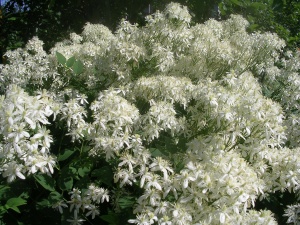
Flowering clematis after fertilization
Clematis loves moist soil, but by no means a "swamp". Therefore, watering is carried out if necessary. In hot and dry weather, it is recommended to water in large quantities, but not every day, for example, 2 buckets of water per bush every 5 days. Be sure to keep in mind that you cannot pour a strong stream into the center of the bush.
To maintain the necessary moisture and coolness, it is good to plant any annual plants or flowers next to clematis. He feels great with neighbors such as a climbing rose.
Even in the absence of feeding, the plant will grow and bloom, but if you fertilize it a little, it will take on a simply gorgeous look: with branchy curly stems of a juicy green color, large leaves and subsequent abundant flowering.
In early spring, with the appearance of thawed patches, it is advised to feed clematis with a solution of lime, at the rate of 200 g per bucket of water. This amount will be enough to feed three separate bushes. After that, it is necessary to carefully loosen the soil and sprinkle it with either sawdust or black soil.
Then, once a month (from May to August), it is recommended to feed with complex mineral fertilizers and organic blood (infusion of water and manure), they should be alternated.
For the prevention of diseases and pests, the bushes are treated with special means.
Due to its ability to grow on a large scale, clematis must be pruned twice a year: in autumn and spring. At the same time, forming and maintaining the required appearance.
Reproduction
This bush reproduces in the following ways:
- Seeds
- Cuttings
- Layers
- By dividing the root system, when dividing the bush into parts.
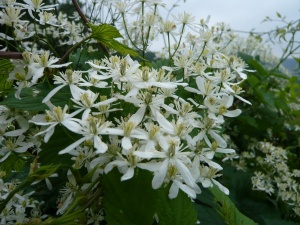
Clematis grown from cuttings
The first method is the longest. Seeds are planted in early spring in a warm place. After their emergence, they are transplanted into a greenhouse. They also hibernate in a greenhouse, and the next year, at the end of spring, they can be planted in a permanent place in open ground. The plant is considered an adult 4 years after planting.
Reproduction by cuttings and layering begins around July.
The division of the bush is provided in the fall before winter, or in early spring.
By watching the video, you will learn more about clematis care.
If you want to decorate your site with a green flowering liana, then you just need this unpretentious bush. Clematis grape-leaved not only decorates, but also perfectly hides various imperfections of buildings and terrain. And by planting greenery on your veranda or terrace, you will create a paradise of coolness in a sultry summer.
Pests and diseases of clematis
Clematis is most often affected by fungal diseases. They are especially prone to wilting. With this disease, the pressure in the cells and tissues drops, so they become lethargic and inelastic, and then completely dry up. Several pathogens cause wilting at once, which prefer to live in the soil and start their infection from the roots. This means that the correct work with the soil will help protect the plant.
In late spring, they check if there are any affected areas of the plant, and remove them completely, and the plant itself is treated with a foundation or azocene at a concentration of 2%. If the plant is severely infested, it is best to dig it up and burn it to prevent the spread of the infection. The soil where the infected clematis grew is treated with fungicides.Also, clematis can be affected by powdery mildew or gray rot, which are also fought with fungicides.
Rust is a fungal disease characterized by the formation of orange pads on the shoots and leaves. The leaves turn brown, dry up, the plant is deformed. They fight rust with Bordeaux liquid at a concentration of 1-2%. You can also use copper oxychloride and oxych.
In summer, shoots and leaves can be affected by dark gray necrosis, ascotichosis, or cylindrosporiasis. All these are different forms of necrosis that cause characteristic spots on the leaf plates. You can fight these diseases with a 1% solution of copper sulfate.
Clematis viruses rarely infect. It happens that insects can bring in a yellow mosaic of leaves. If this happens, the plant is destroyed, since it cannot be cured. It is not recommended to grow clematis near delphinium, peas, hosts, aquilegia, peonies, phlox, since they are especially susceptible to mosaic disease.
It is extremely rare that clematis are affected by leaf and root nematodes, the plant becomes stunted in appearance, deformed, and if you dig in the roots, thickenings - nodules are visible on them. Nematodes are extremely difficult to control. It is impossible to save Clematis, it should be destroyed, and not to plant more in this place for several years.
Landing
Culture tends to grow in any kind of soil. However, the intensity of flowering and the development of culture depend on the correctly selected planting site.
Seat selection
The bush prefers plenty of sunlight. Therefore, it is planted in places where the sun's rays hit the bush for at least 6-7 hours a day. Also, the landing site should be protected from drafts and wind.
Important. The planting site should not be sultry, otherwise burns may form on the leaves.
Soil requirements
The plant grows in aerial soils that contain organic fertilizers. The soil should be moist, but in moderation, otherwise putrefactive processes may form in the roots, and the plant will die.
Timing
Planting clematis should be carried out in mid-September, before the first frosts, the plant will have time to get stronger and survive low temperatures. If necessary, clematis seedlings can be planted in mid-April under cover.
Landing scheme
Before planting, it is necessary to prepare a nutrient mixture for planting a seedling in open ground. To do this, mix 2 parts of humus, part of the soil and part of the sand. It is also necessary to add a pinch of lime to the composition to reduce acidity.
Planting clematis is done according to the following method:
- dig a hole 40 cm;
- drainage is placed at the bottom of the pit;
- the soil is laid in a hole in the shape of a hill;
- the seedling is placed in a hole and dug in to a depth of 15 cm;
- the seedling is watered and mulched on top with a layer of sawdust.
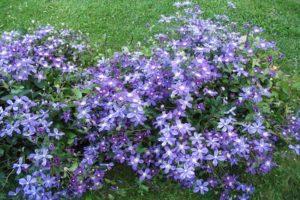
If there is a decrease in air temperature at night, the seedling must be covered.
In order for the seedling to quickly begin to develop, it is necessary to observe regular care and timely fertilization.
Watering
Watering should be done every three days. One bush should take at least 1 bucket of water. In order for moisture to retain, it is necessary to use a layer of mulch.
Loosening and weeding
The soil is loosened to improve the penetration of oxygen into the soil, the procedure must be carried out regularly before watering. Weed removal is carried out as needed.
Top dressing
Fertilization must be carried out according to the following scheme:
- spring - nitrogen fertilizers and chicken droppings are applied;
- before the formation of buds, it is necessary to apply phosphorus and potash fertilizers to increase the formation of inflorescences;
- complex fertilizers are used twice during the summer;
- in the fall, mullein and humus are introduced.
Trimming group
Clematis belongs to the 3rd group of pruning. Vines are pruned twice a year, in autumn and early spring, before budding.Summer pruning can also be used to create the desired shape.
Protection against diseases and pests
The plant is resistant to diseases, but the following problems may arise:
- Rust - appears in the form of spots on the leaves. The infection spreads quickly and can infect a bush in a short time. For treatment, copper sulfate or special spray preparations are used. The damaged areas must be removed.
- Root rot - occurs as a result of excessive moisture levels in the soil. To eliminate the problem, it is necessary to regularly loosen the soil and follow the watering rules.
- Powdery mildew - appears in the form of a gray bloom on the leaves. For treatment, Bordeaux liquid or soap solution is used.
In addition to diseases, the plant can be attacked by pests:
- Aphid - affects young shoots and leaves. The insect feeds on sap and secretes a specific sticky liquid that provokes the development of the fungus. For removal, the vines are sprayed with soapy water.
- Spider mite - appears in the form of black dots on the leaves. The insect damages the bush and enmeshes the leaves and shoots with cobwebs. To eliminate the tick, the drug "Fitoverm" or "Actellik" is used.
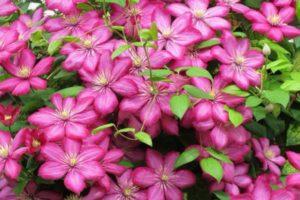
Timely treatment of diseases prevents the death of the bush.
Clematis plant, medicinal properties
Description.
Grape-leaved clematis, buttercup family, is a liana, up to 10 meters long. The bark on the branches of the bush is ribbed, covered with cracks. Clematis leaves are odd-pinnate, mostly five-lobed or, less often, three-lobed, opposite. They are located on long petioles. The leaves are ovoid, from 3 to 9 cm long. The flowers of the clematis are white, small, with a four-petalled perianth, with many pistils and stamens. They are grouped in paniculate inflorescences. The flowering time of clematis is June-July. The fruits are polysperms of flattened nuts, the length of which is 7 mm.
Liana is found in the Caucasus, in the Crimea, in the East, in Europe, in North Africa. Clematis grows in floodplain forests, river valleys, among bushes, in ravines, on rocky mountain slopes, at an altitude of 1.2 km above sea level.
Reproduction, cultivation.
Reproduction of clematis is carried out by seeds. In the spring, you can sow seeds in the ground or in boxes. Saplings are planted in the ground in the fall, in a well-prepared soil with a buried root. Weeds are removed at the planting site, the necessary fertilizers are added to the dug holes. Immediately after planting, the seedling must be tied to a support. After winter, with the onset of warmth, the vine needs to be cut, old shoots removed, loosened and fertilized. Grape-leaved clematis begins to bloom in the second or third year after planting. It can grow in one place under optimal conditions for up to 20 years. The clematis plant is resistant to drought, frost, diseases, pests, tolerates dust and smoke, and is not difficult to care for. For winter, to protect from frost, the vine is placed on the ground and covered with leaves.
Preparation of medicinal raw materials.
Buds, leaves, flowers of grape-leaved clematis are medicinal raw materials. Harvesting of buds begins in early April, leaves - all summer. The collected raw materials are dried in a well-ventilated and dry place. Dried collections of grape-leaved clematis lose their toxicity and are already used as a medicine.
Chemical composition.
The leaves and flowers of grape-leaved clematis include saponins, essential oil. The presence of the substance amenol causes irritation and redness of the skin. The plant contains lemon balm, caffeic acid, beta-sitosterol, stigmasterol, leontin, glycoside, wax substances.
Clematis: properties, application.
In folk medicine, remedies from the leaves and flowers of grape-leaved clematis are used to treat headaches, scabies, and sexually transmitted diseases. Clematis is used as an anesthetic for diseases of sciatica, peptic ulcer, migraine.The healing properties possessed by clematis are diuretic, diaphoretic, laxative. Means based on this medicinal plant treat malaria, bladder, cystitis, prostate adenoma.
Recipes for the preparation of medicines from clematis.
To prepare the infusion, you need to grind the leaves and pour one teaspoon of raw materials with half a liter of boiling water, leave to infuse for an hour, then strain the resulting infusion. It is used both externally in the form of compresses for skin diseases, and internally - three times a day, a quarter of a glass before meals.
Tincture of clematis buds is prepared as follows: you need to take 1 part of the kidneys and 10 parts of vodka, insist in a warm place for two weeks. Then you need to strain and take 10 drops after breakfast and at night before bedtime.
Infusion of flowers and leaves.
To prepare the drug, one tablespoon of a dried mixture of crushed flowers and leaves should be poured with half a liter of boiling water. Insist 15 minutes, strain and use a tablespoon four times a day.
Contraindications
Infusions should be prepared strictly according to the recipe, as an overdose can harm your health.

